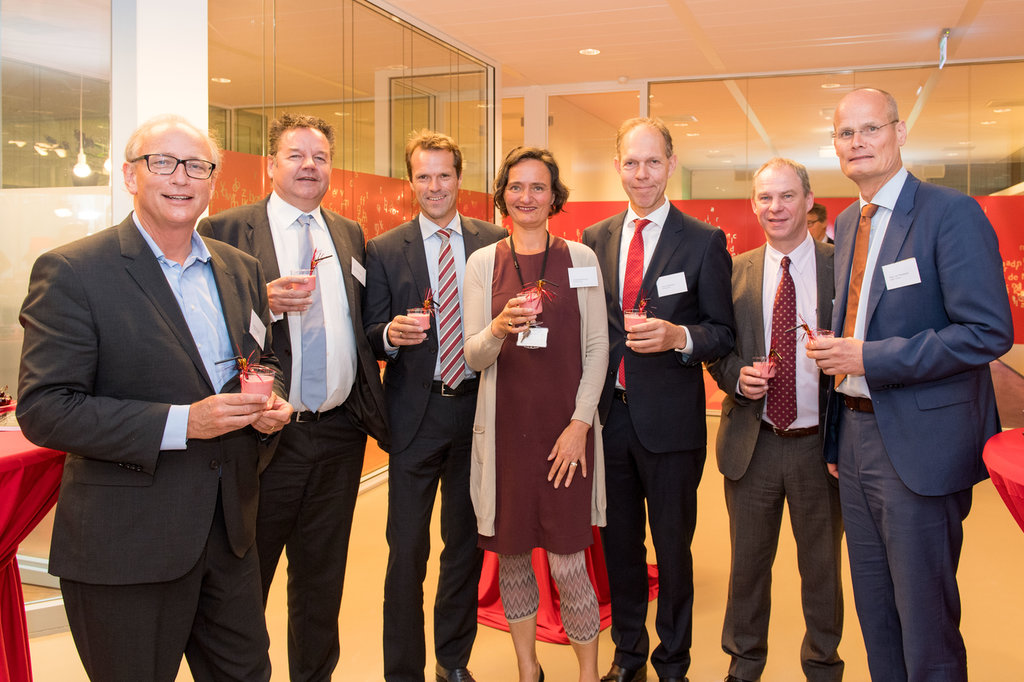Public Private Partnerships
Working with industry to improve healthcare
Tom Oostrom & Hanneke Dessing are both board members of the SGF (Samenwerkende Gezondheidsfondsen), the Dutch Cooperation of Health Foundations. In a combined interview we asked them about their experiences with cooperation with public and private partners.
How can the industry contribute and cooperate with health foundations?
Tom: They can help us to develop specific knowledge - with tools, with support and expertise in the phase of valorisation. They can make solutions available for patients as quickly as possible. We need to work together with industry if we take our promise to patients and financial donors. In that way we think industry is a natural partner for health foundations.
We need to work together with industry if we take our promise to patients and financial donors, to improve healthcare, seriously.
One example of cooperation with industry is NeoKidney. Can you shed some light on the development of this project?
10 years ago we discovered there was a new technique to make a haemodialysis machine smaller so that patients can dialyse at home or wherever they want. Then they no longer have to adapt their lives to the treatment, but instead the treatment adapts to their lives. The dialysis industry did not take this step and so we decided to do it. Right now we are developing the Neokidney together with partners in the Netherlands, Switzerland and Singapore. Clinical tests will start at the end of 2017.
Getting this innovation to the patient requires social innovation and healthcare innovation besides the existing technological innovation. Social innovation is about involvement and acceptation of this new treatment by patients and professionals. With healthcare innovation I mean the organisation of care to support a patient using a Neokidney. I am convinced that these three types of innovation need crossovers if they are to be realised.
How can the Top Sector LSH contribute to the mission of Health Foundations?
Hanneke: The mission of the Diabetes Foundation is to find a solution for diabetes and complications like heart failure, kidney failure and blindness. That is why we have been investing for many years now in finding a cure for diabetes type 1. One of the paths is the transplantation of beta cells.
The Top Sector LSH helps us to accelerate this process, by consolidating the strengths of several parties: government, businesses, researchers and foundations. By connecting all these stakeholders in RegMed XB we are able to reach our goals faster and ensure that patients can benefit from this. That is why we are participating.
What are the joint ambitions of the SGF and the Top Sector LSH?
Hanneke: One ambition is to join forces by investing in joint research for several diseases instead of focusing on one single disease. There are common underlying mechanisms and we can benefit from the knowledge of research groups in different fields to find solutions for these diseases. That means more cooperation in which the knowledge and strengths of different fields are combined. We strongly believe that the Top Sector LSH can help us building these coalitions and to accelerate this process.
How do you see the future of the collaboration between the health foundations and the Top Sector?
Tom: We believe the collaboration will help us to find a solution for several societal issues. This will be achieved by consolidating the strengths of many parties, accelerating processes, and releasing an enormous resolving power. It will stimulate innovation in many fields and, in our view, it is crucial to continue the collaboration, learn from it and develop it. Crossovers between different top sectors will also help to stimulate and accelerate innovation.
What is your final message to everybody working in the Life Sciences & Health sector?
Hanneke: This Top Sector can change the lives of all people. By inspiring each other and collaborating we can take huge steps in making people more healthy and reducing diseases. So let's join hands!
By inspiring each other and collaborating we can take huge steps in making people more healthy and reducing diseases. So let’s join hands!

